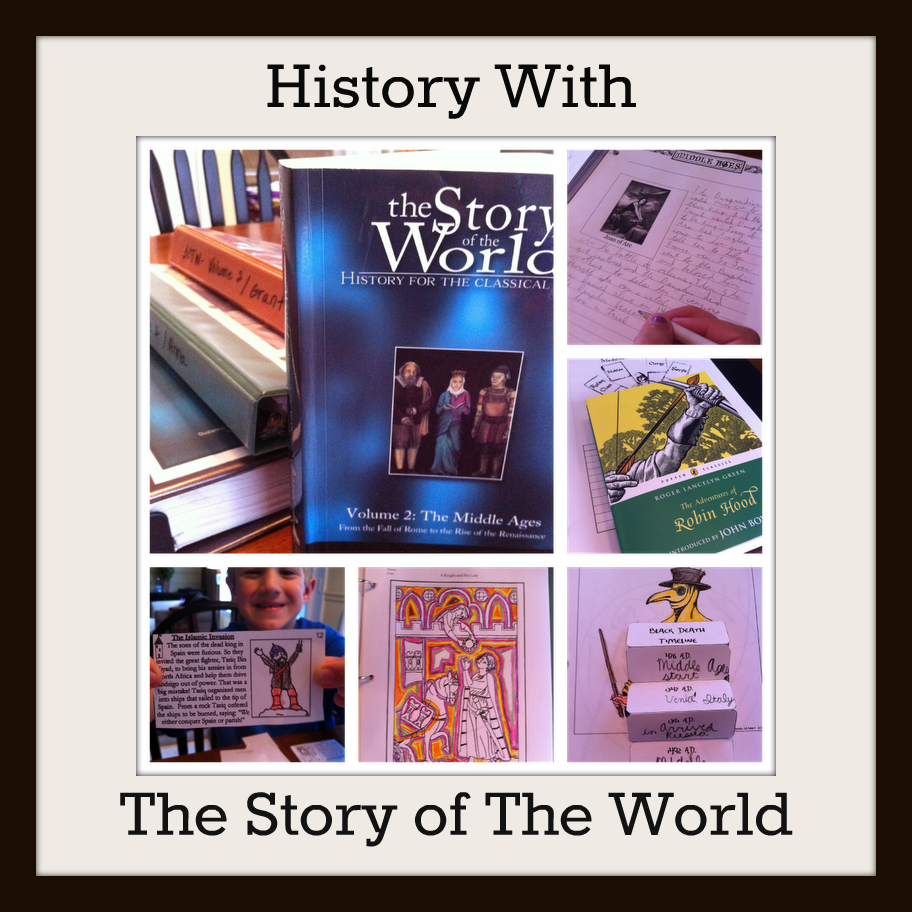5 Easy Ways to Foster Art Appreciation with Art Books
 Wednesday, September 11, 2013 at 5:00AM
Wednesday, September 11, 2013 at 5:00AM

I'm happy today to share this space with Kristen, from Art History Mom.
Studying art isn't a strength of mine, and getting to know Kristen has been a blessing. Her blog is full of great ideas and I know you'll enjoy this guest post about fostering art appreciation with art books.
Last year my mother-in-law, Carol, came over to our house holding a large, tattered book. “Ma Ma Ma!” my three children exclaimed as they ran to give her hugs and kisses. The kids then gathered around Grandma on the couch to see what was inside the big, mysterious book.
She opened the pages to reveal beautiful works of art by such masters as Sandro Botticelli, Peter Paul Rubens and Piero della Francesca. At first the children looked bored, but Carol started to engage their imaginations by pointing to figures in the paintings and asking leading questions like “what do you suppose she’s thinking?” and “can you find the insects in this still-life?”
“Where did you get that book?” I asked while preparing dinner. When she was 7 years old, her mother purchased the art book for $25 (a significant sum at the time) and placed it prominently in the living room. Young Carol was soon spending hours devouring its pages. “This book fed my soul for years” she said looking down at the book fondly.
That made me think.
What images are my children seeing that “feed their souls?”
Bland strip malls, magazines in the grocery store line, over-stimulating TV commercials - they see plenty of these, but do they see images that actually elevate their hearts and minds? I glanced over at our bookshelves which are lined with beautiful art books. The thought of showing these books to my children had never even occurred to me.
That next weekend I took the books down from the shelf and placed them on the coffee table. Once again, at first the kids weren’t enthusiastic, but I started to make a game of it. “Find the page with a vase of sunflowers and count them” I’d challenge.
One year later, our books are covered with little fingerprints, and my children can tell the difference between a Leonardo and a Caravaggio, a Monet and a Cézanne, and an O’Keeffe and a Kahlo.

L: This Picasso was Celia's painting of choice. She would hang it in her bedroom. R: Anders and Winston enjoying an art history treasure hunt.
You, too, can introduce your children to great works of art by using art books. Here’s how:
1. Get the Goods
If you own any art books, take them off the shelves and leave them on the coffee table for a few days. See if your children show any interest. Also, the library usually has a decent selection and big booksellers like Barnes and Noble often have large art books on their sale racks.
2. Treasure Hunt Fun
Take ten minutes to look through the books and find subject matter within different works of art that would interest your child. Write a list of these elements. Hand one book to each child and give them the task of finding the special subject matter. For example, I had our friend Savannah search a Chagall book for a bride and groom floating through the night sky. Another young friend, Ansley, was in charge of finding Picasso’s Magicians.
3. Look and Learn
Once the child has found the work of art, observe it together and discuss what you see. Ask your child questions such as: “How does the work of art make you feel? What colors and shapes do you see? What is happening in this painting? What do you think the artist is trying to tell us through this work of art?” You could also take note of the date the work was created and find out what was happening in the world at that time. Another idea is to listen to a piece of music from that era.

Savannah's mom dictates her story about one of Vincent van Gogh's paintings.
4. Pick a painting
Pose this question: “If you could own any one painting in this book, what would it be and where would you place it in our home?” Once they’ve made their selection, ask them why they chose that particular work of art. Have a conversation about art!
5. Creative writing and art
This “Mad Lib” activity is fun when several children are collaborating but can work equally as well with one person. Select a painting that you think would be conducive to good story making. One child starts by looking at the artwork and beginning a story about it. Ask brainstorming questions such as: “Where does this painting take place? Who are the people/animals involved? Where have they been and where are they going?” Go around the room as each child adds to the story. Have one person record the story. If you are a teacher, you could separate the class into groups and make it a competition to see who invents the most imaginative story.
Note: It’s important to let your child’s interest build. When first introducing art history to your kids, keep it short and sweet. The more art history I show my children, the more enthusiastic they become—but it takes time.
Before you know it your kids will be opening art books and saying “Mom, look at this amazing sculpture by Bernini.”
Kristen Nelson is a wife and mom of three little masterpieces. Her blog, Art History Mom is a place where parents and kids—or teachers and students—come together to view and discuss great works of art. She features art history lessons and related art projects. Kristen resides with her family in Atlanta, Georgia.

















Reader Comments (6)
I love these ideas! I have many coffee table books on O'Keefe, Khalo, and more but I have never used them in this way. My girls are not too old to enjoy these activities. Thank you!
This is a great post especially since I am not an art historian myself :) So thankful I came across your blog!
This is perfect timing! I just found some beautiful art books my mother gave me years ago and I never got around to unpacking after our last move. They are out on the coffee table and ready to be shared. thank you for all the wonderful ideas!
She is amazing! :DD
Enjoyed the blog and the photos, Kristen! Also happy to know of this Homegrown Learners website in addition to ArtHistoryMom! Cathy
If you can find a pop-up book called Botticelli's Bed and Breakfast, it is fascinating to explore and try to discover the famous paintings used in decorating the B&B. For example, The Scream is looking in the bathroom mirror. It will only be available through a used book seller.